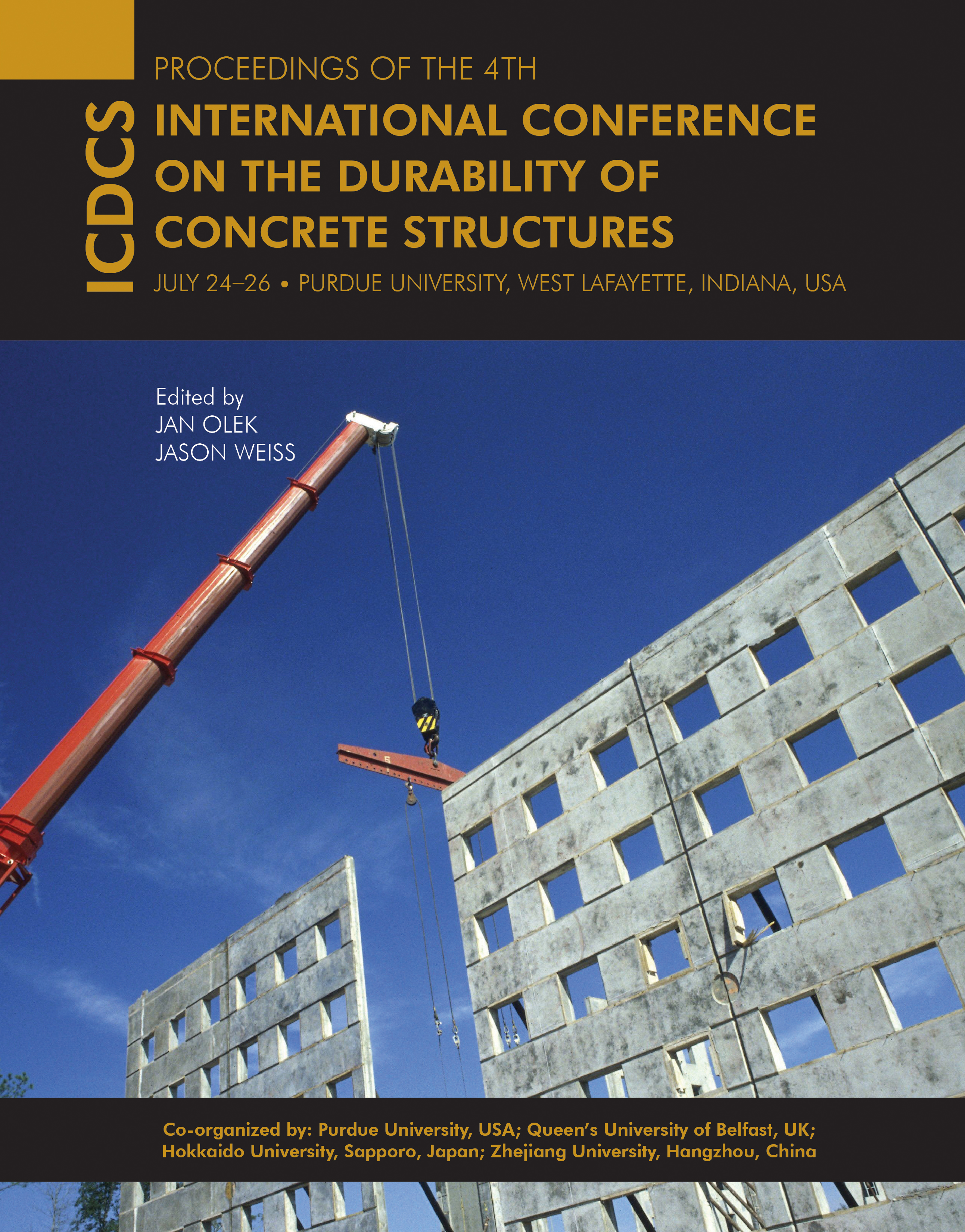Abstract
This paper is to study the effect of surface coating and silane hydrophobic agents for high performance concrete durability in a marine environment of tidal zone and splash zone by exposure test in JiaoZhou Bay. The results indicated that surface coating had good protection and coating quality after a 5-year period and the adhesive strength with concrete surface was more than 2.5 MPa. Surface coating can effectively improve chloride ion penetration resistance of concrete structures. The substrate concrete of specimen treated with silane had some chloride ion penetration, but compared with untreated concrete, chloride content of silane-treated concrete within 10 mm depth from surface was reduced by 43 and 67% in the tidal zone and the splash zone, respectively. Two surface anticorrosion measures technologies were effective in reducing the chloride erosion and improved the service life of marine concrete structure.
Date of Version
July 2014
DOI
10.5703/1288284315391
Recommended Citation
Yang, Haicheng; Xiong, Jianbo; Su, Quanke; and Yan, Yu, "Exposure Test on Two Surface Anticorrosion Technologies for Marine Concrete Structure" (2014). International Conference on Durability of Concrete Structures. 6.
https://docs.lib.purdue.edu/icdcs/2014/corrosion/6
Exposure Test on Two Surface Anticorrosion Technologies for Marine Concrete Structure
This paper is to study the effect of surface coating and silane hydrophobic agents for high performance concrete durability in a marine environment of tidal zone and splash zone by exposure test in JiaoZhou Bay. The results indicated that surface coating had good protection and coating quality after a 5-year period and the adhesive strength with concrete surface was more than 2.5 MPa. Surface coating can effectively improve chloride ion penetration resistance of concrete structures. The substrate concrete of specimen treated with silane had some chloride ion penetration, but compared with untreated concrete, chloride content of silane-treated concrete within 10 mm depth from surface was reduced by 43 and 67% in the tidal zone and the splash zone, respectively. Two surface anticorrosion measures technologies were effective in reducing the chloride erosion and improved the service life of marine concrete structure.





